Step by step guide
Master 10 year service
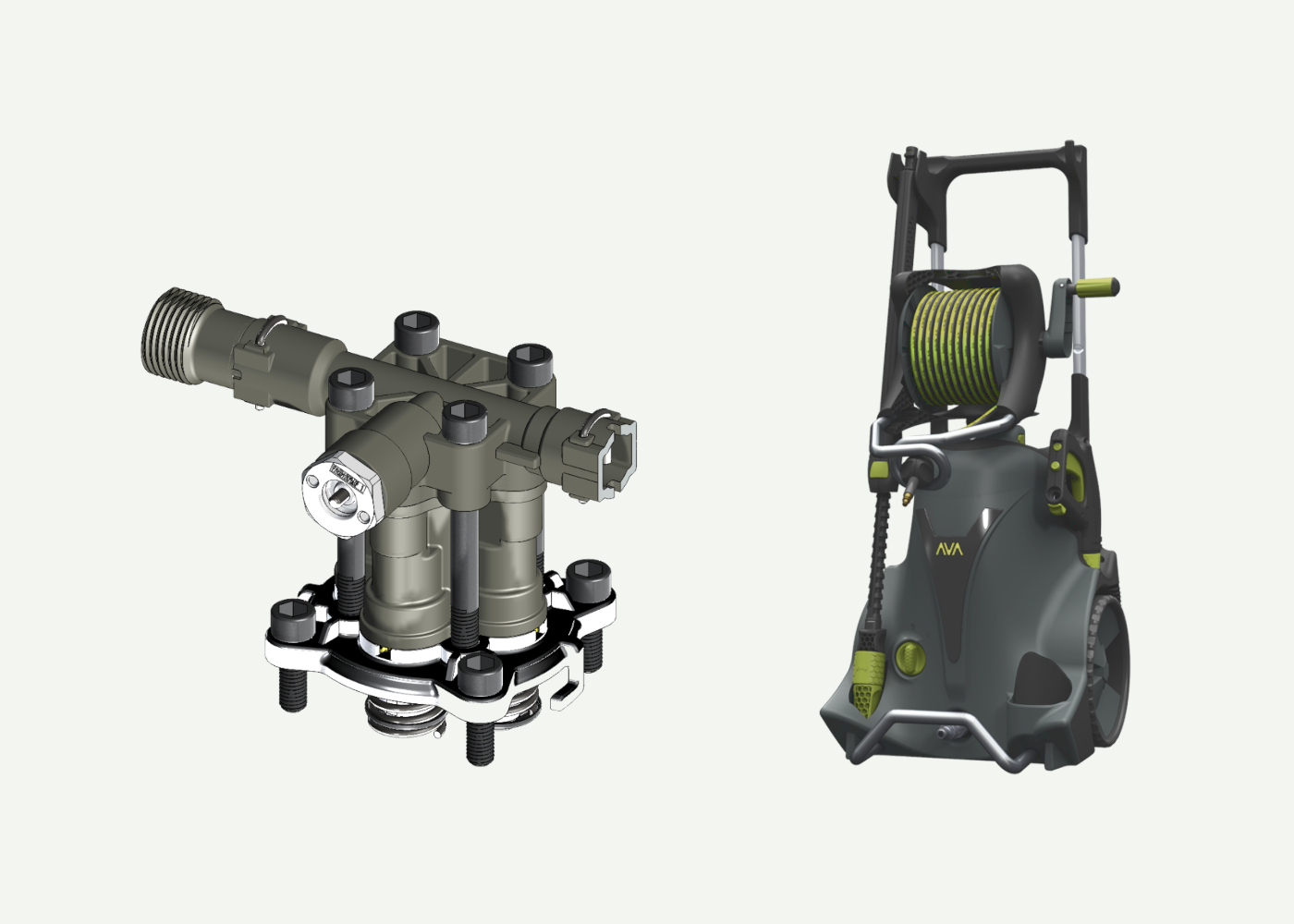
Servicing our pressure washers are quite straight forward and could be done by most people by following the step-by-step instructions in this manual
Please go trough the whole manual before starting work on your pressure washer to make sure you understand the procedure and that you have the necessary tools to complete the task.
Always unplug the pressure washer from both the mains power and the water outlet before starting the service.
Even though power and water is disconnected there may be pressurized water in the hose. Discharge this pressure by pulling the trigger on the gun.
Make sure your work area is clean and appropriate for the work you are about to do. There will usually be a small amount of water inside the pump and hose.
When you are doing a 10-year service, be prepared to collect the used oil from the oil chamber. Please dispose of the oil in accordance with local law and regulations.
ISO 46 hydraulic oil can be substituted with similar non detergent oil of the same viscosity.
00. Parts and tools
An overview of what is needed to do this service.
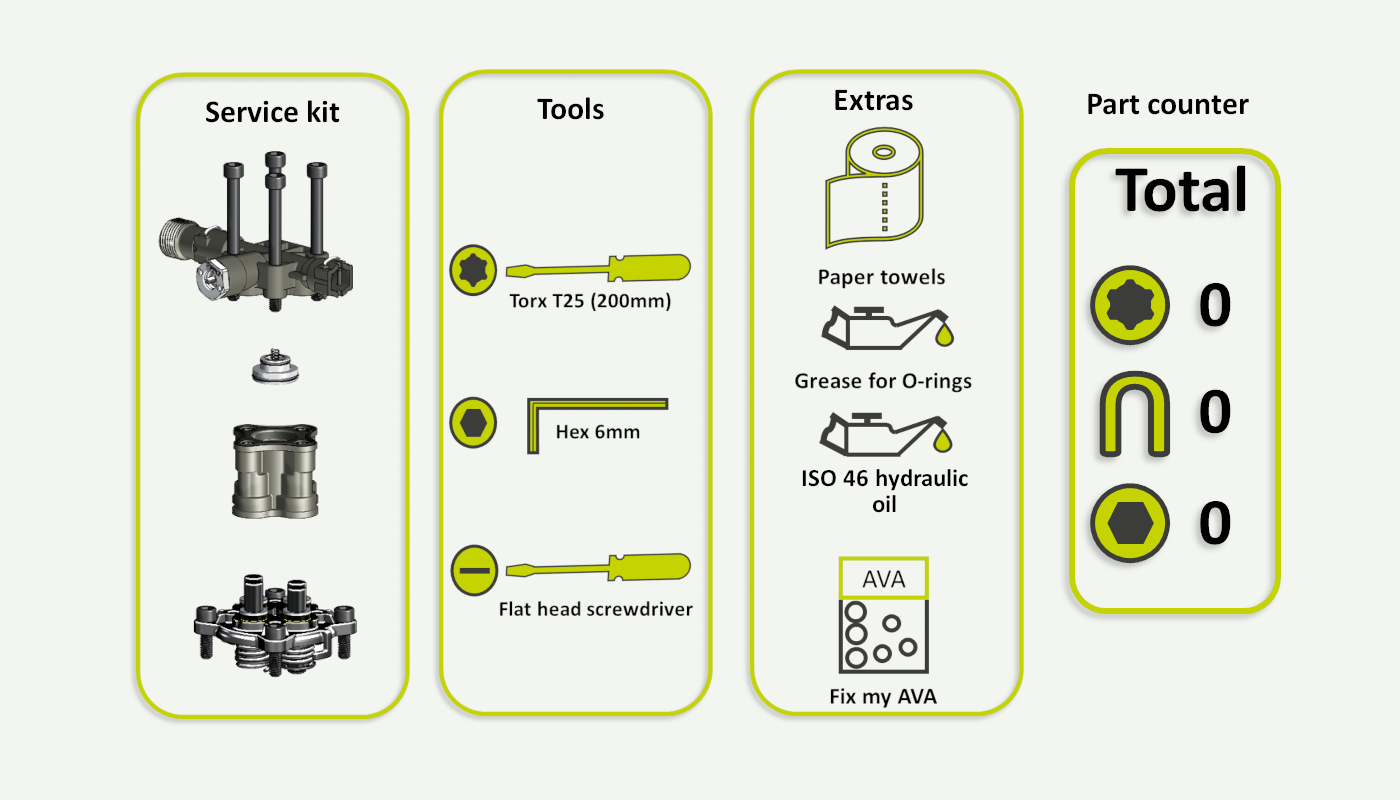
01. Remove water filter
Remove water filter by unscrewing it counterclockwise.

02. Remove screws from the back cabinet
Unscrew the six T25 screws from the back cabinet.

03. Remove the front cover
Push the front brace release button and pull the front cover off.
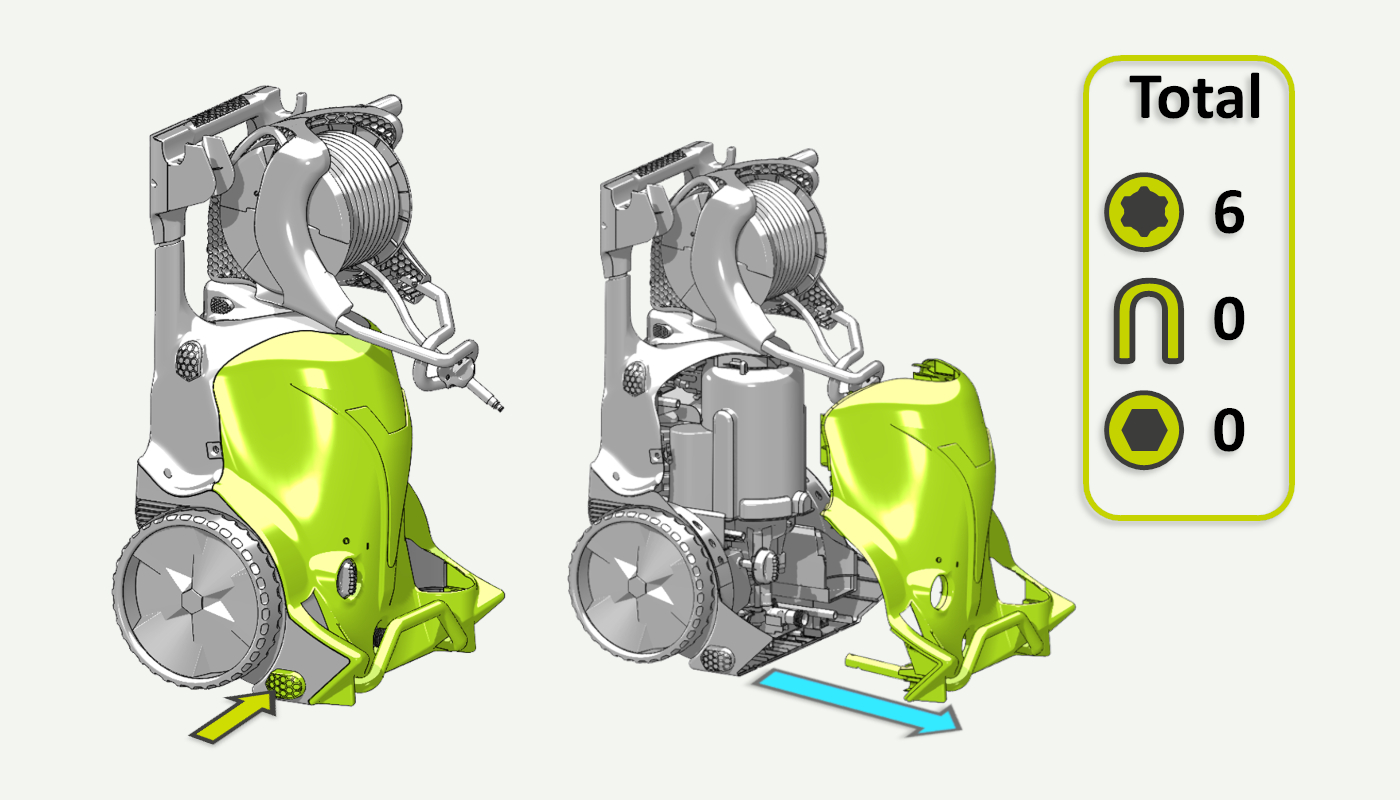
04. Remove screws from the motor/pump
Unscrew the four T25 screws securing the motor/pump.

05. Release cable strain relief
Release the Cable strain release form the back cabinet.
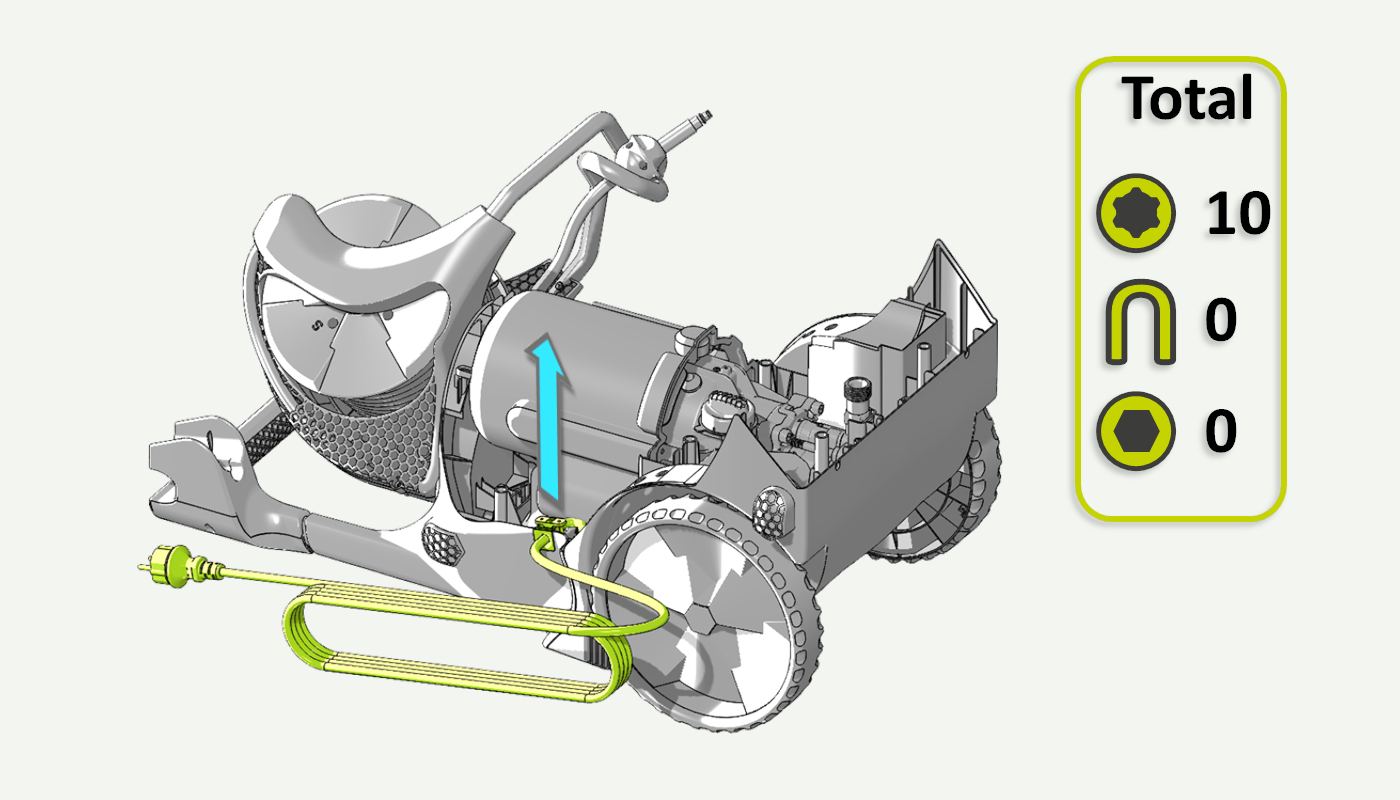
06. Lift the motor/pump unit
Carefully lift the motor/pump so that it is on an angle.
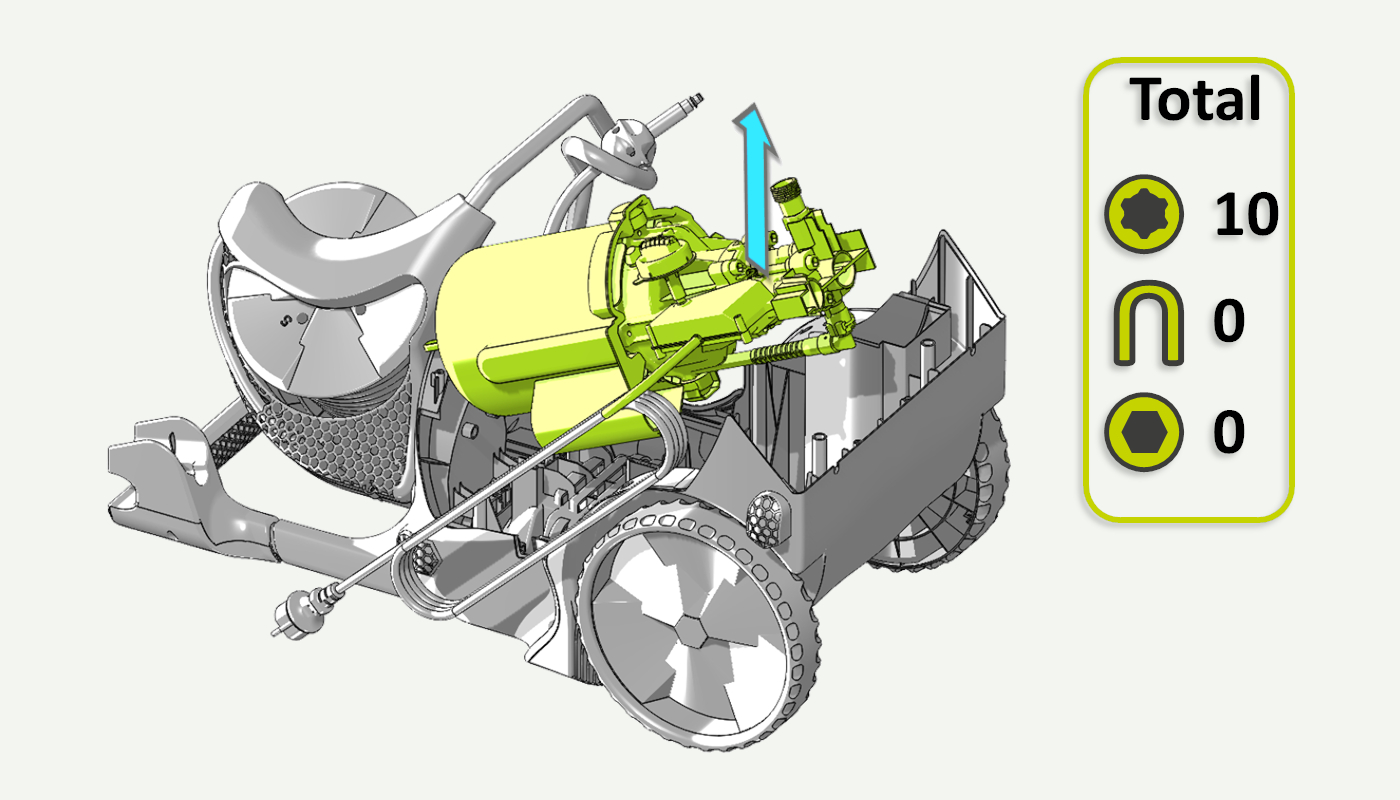
07. Release the internal hose
Use a flat screwdriver or a small knife to release the u-pin securing the internal hose to the pump outlet.
Pull the hose from the pump head.
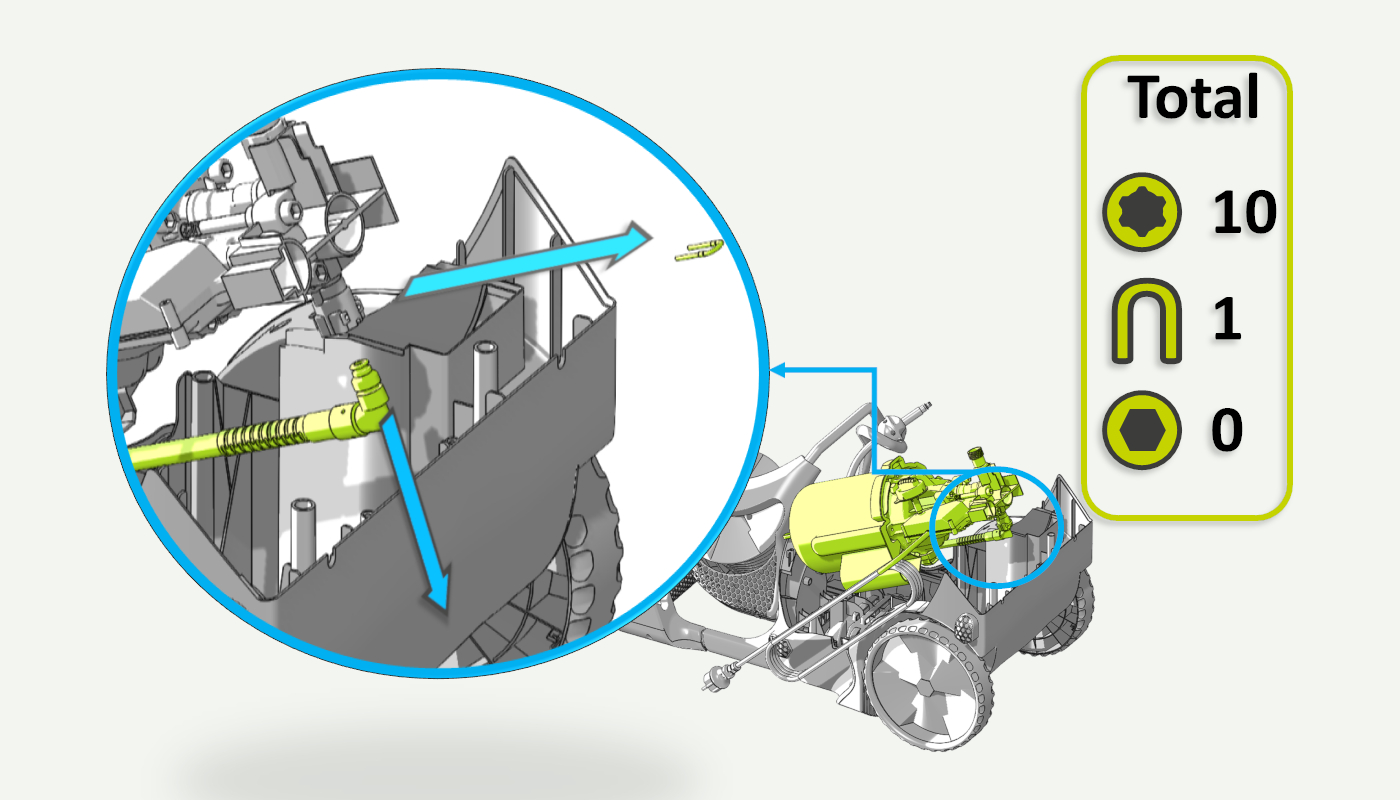
08. Lift the motor/pump
Carefully lift out the motor/pump out of the rear cabinet.
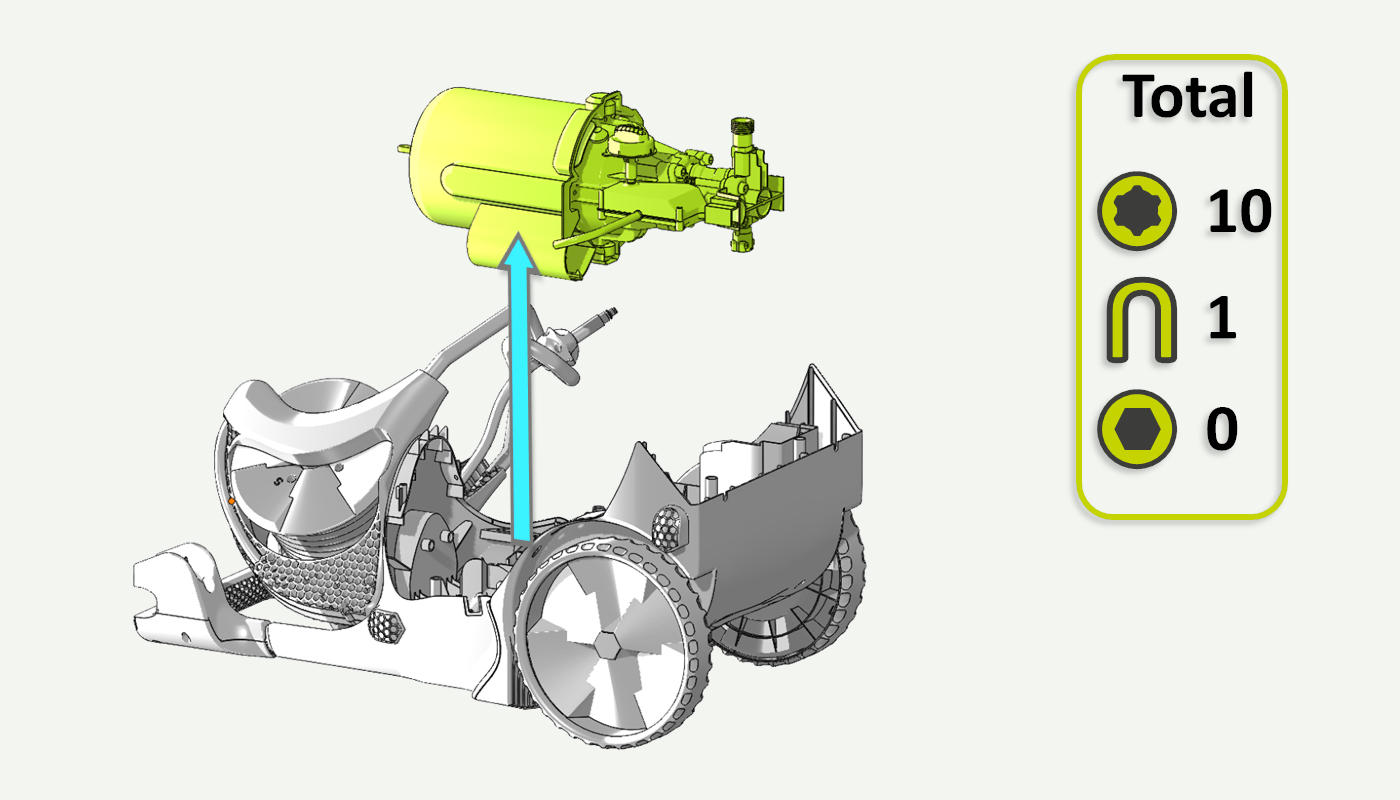
09. Remove parts
Remove the pump head cover and the on/off knob.
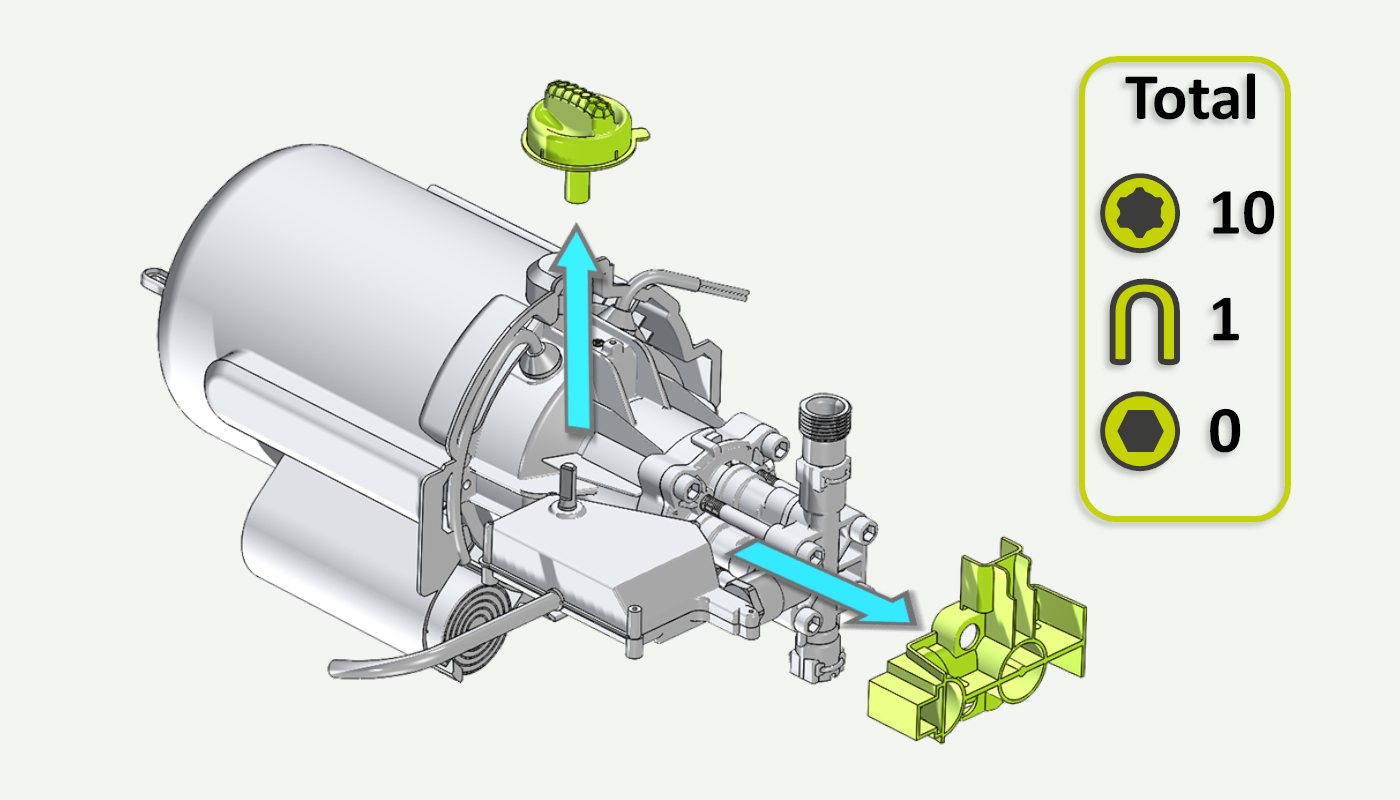
10. Remove screw holding the switch box
Rotate the motor/pump so that you gain access to the T25 screw securing the switch box.
Unscrew this screw.
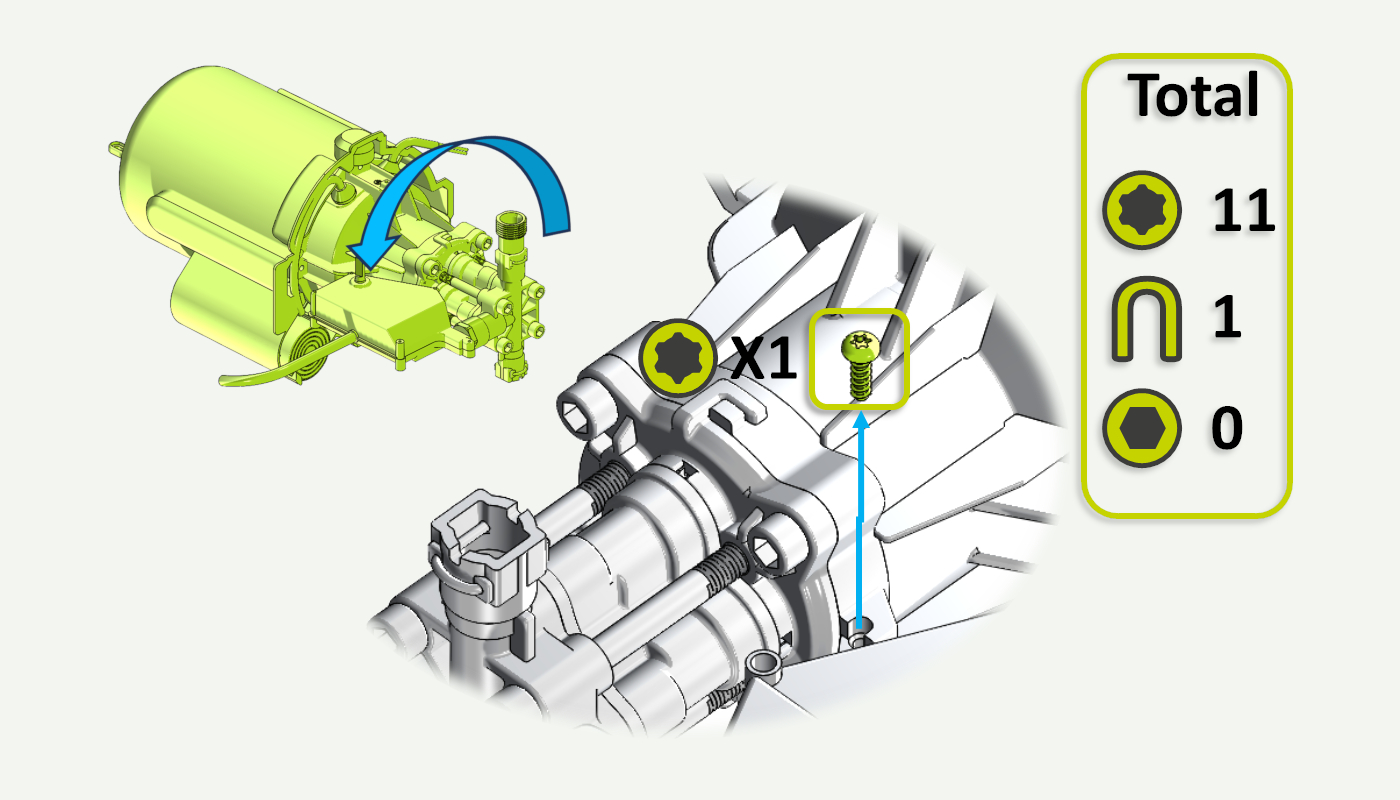
11. Remove switch box
Remove the switch box by pulling it in the direction indicated. It is press fitted onto the start/stop valve on the pump and will release with a pop.
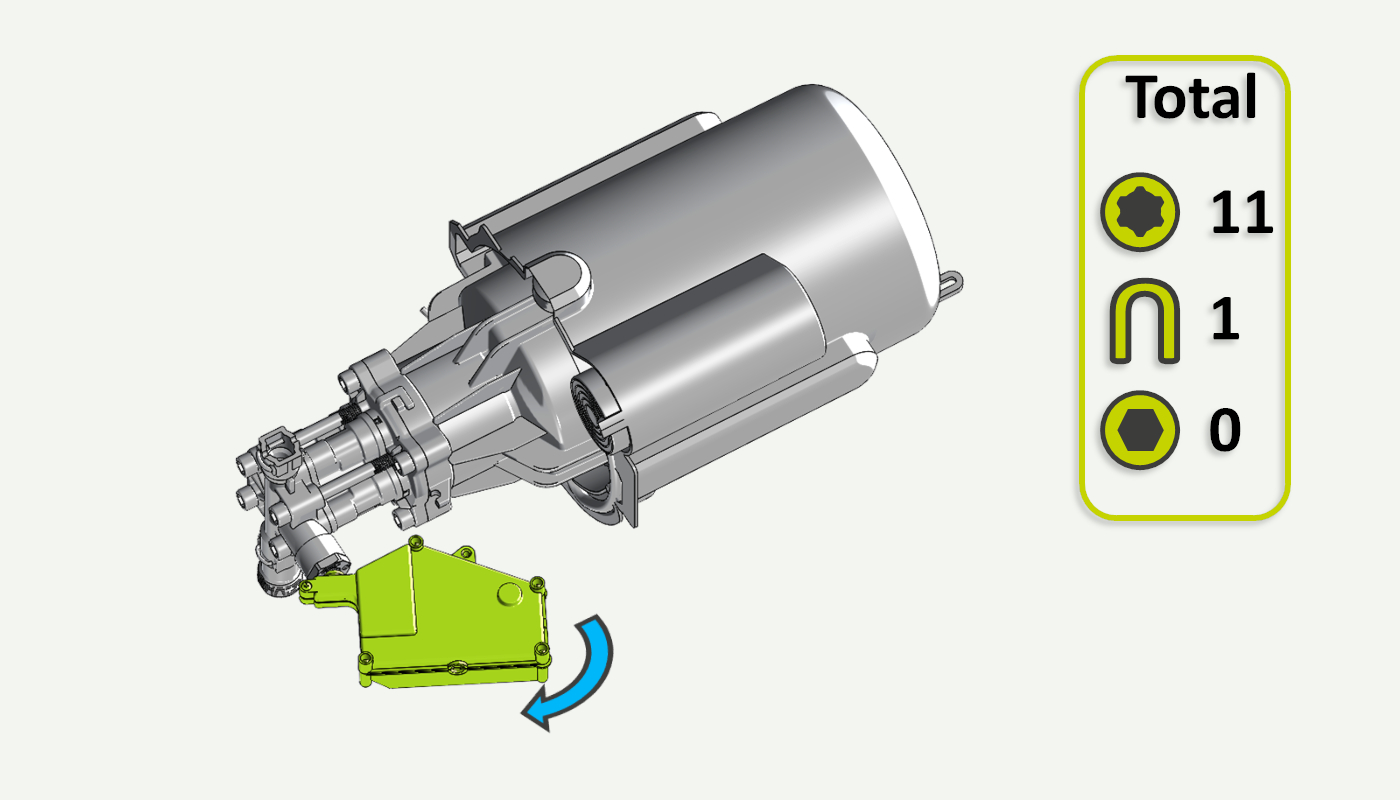
12. Remove screws from piston housing
Use a 6 mm hex/Allen key to remove the four screws on the pump. Be ready to catch the oil from the oil chamber.
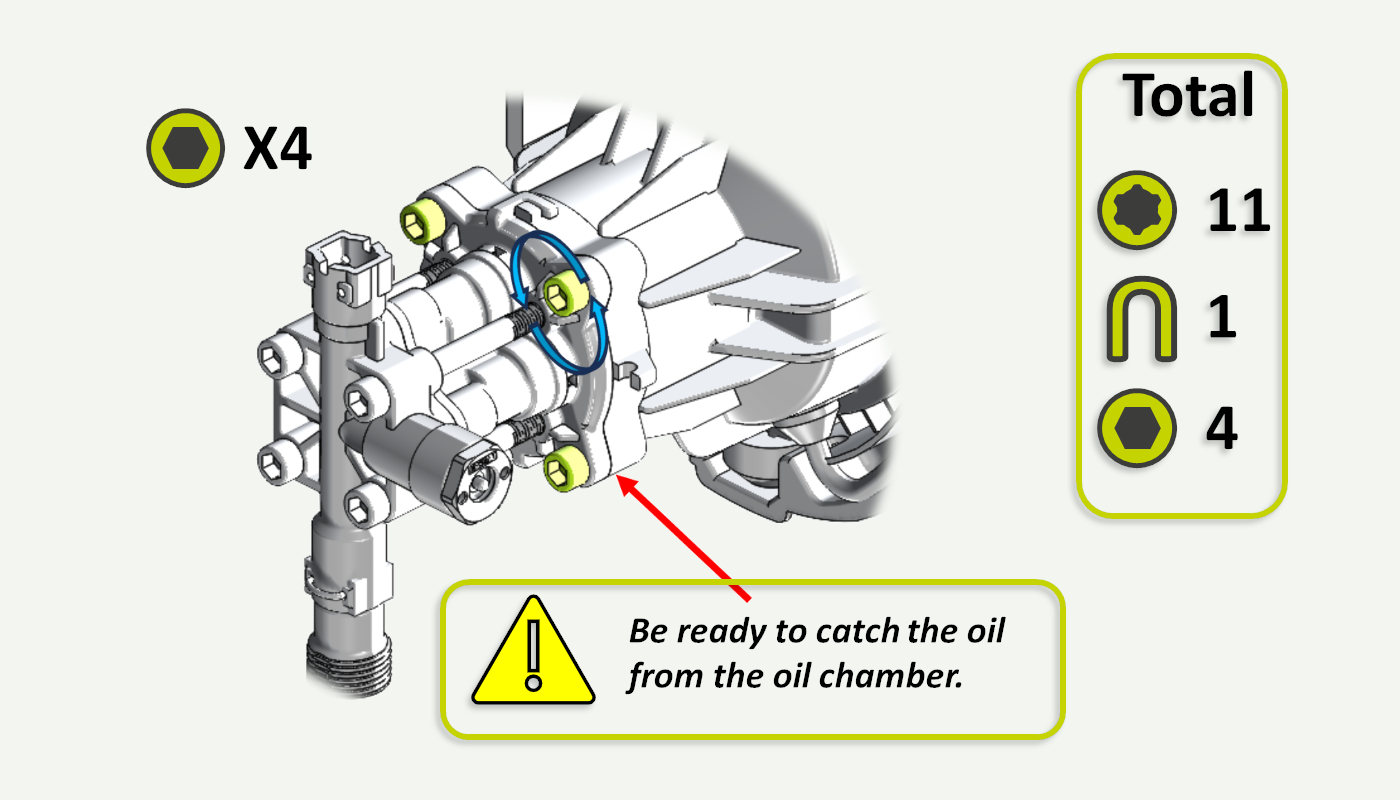
13. Rotate the pump assembly
Remove the four screws. Rotate the whole pump assembly 15-20° counterclockwise to release it from the motor oil chamber.
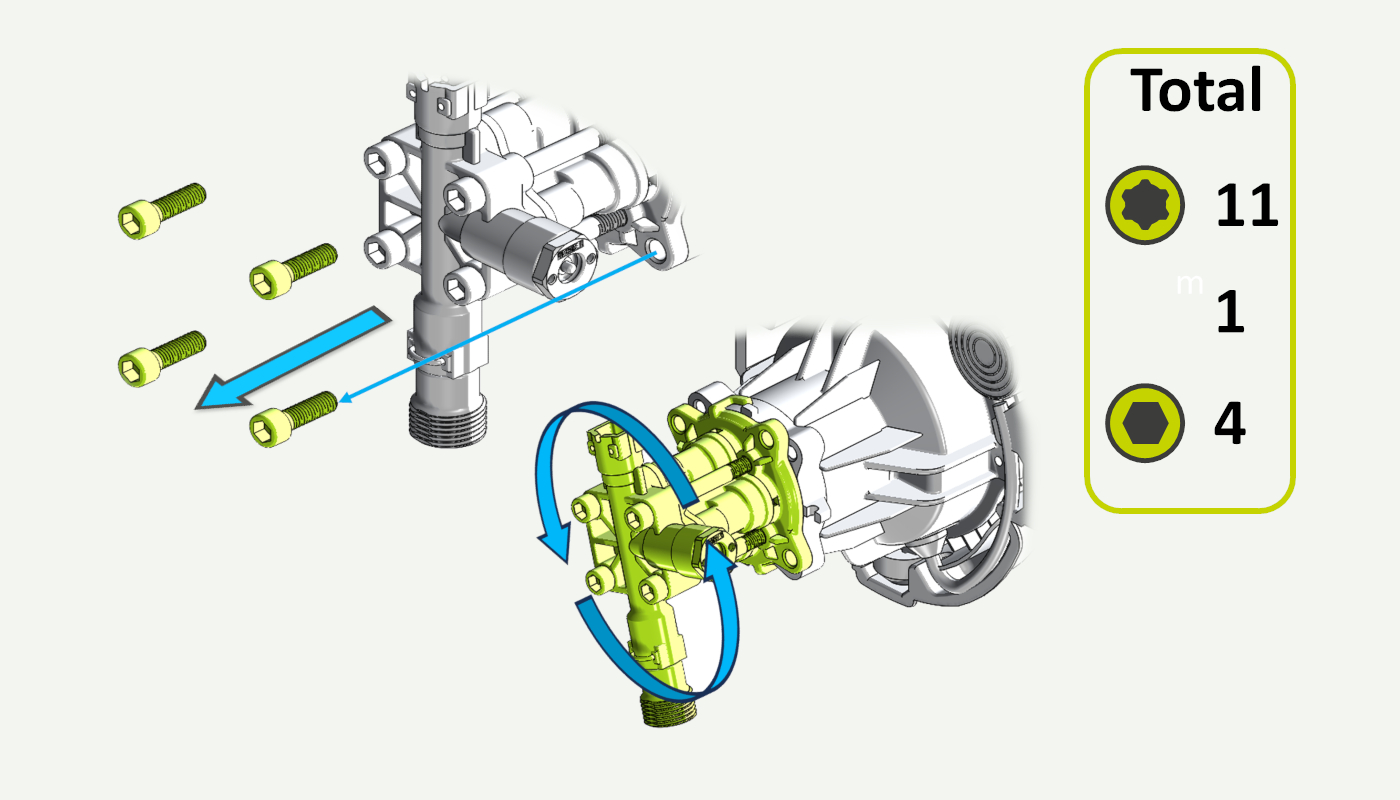
14. Remove the pump assembly
Remove the complete pump assembly.
If the oil has a lot of metal particles in it, we suggest that you also remove the wobble plate assembly and visually inspect the two thrust bearings for damage. If there is no visible damage, clean the parts and the oil chamber, and reassemble.
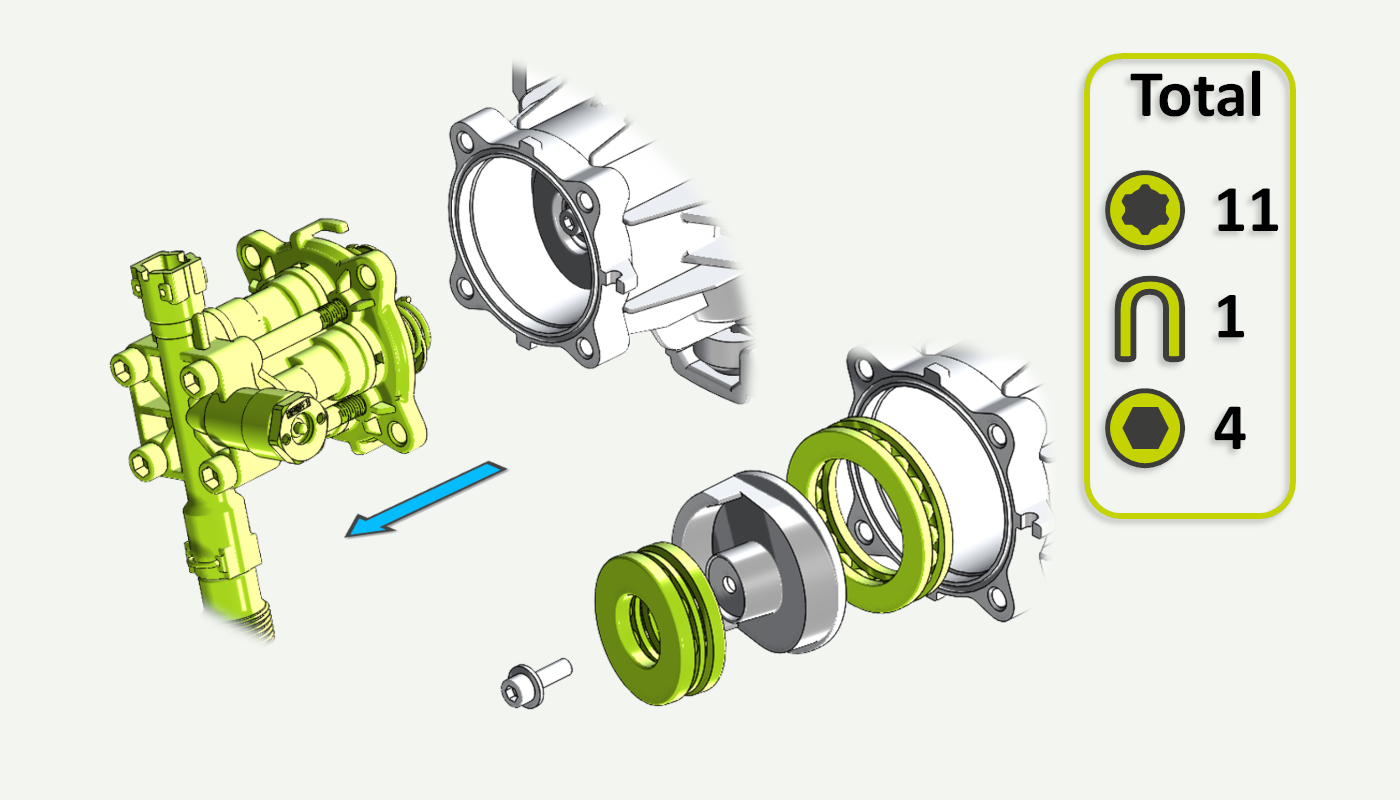
15. Reuse parts
If the service kit does not come preassembled, you need to split the old pump. Remove the four Allen keys keeping the pump together and extract the four brass backing rings (pink). P80 models also have 4 additional backing rings (blue). If these were not included in the service kit you also has to move these over to the new pump.
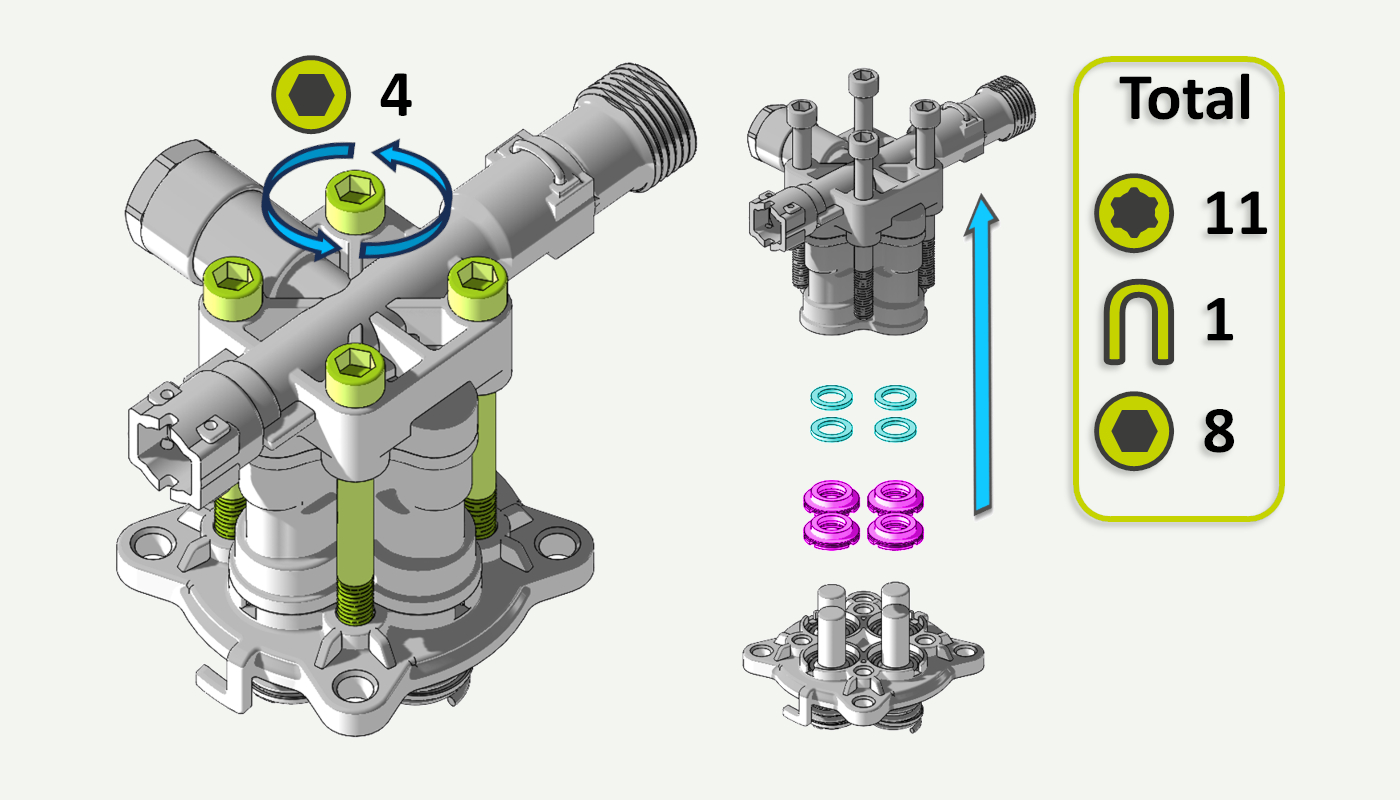
16. Assemble the pump
Lubricate O-rings as indicated and then assemble the pump as shown. P60 and P70 pumps should not use the plastic backing rings (blue).
If the service kit comes preassembled, you can skip this step.
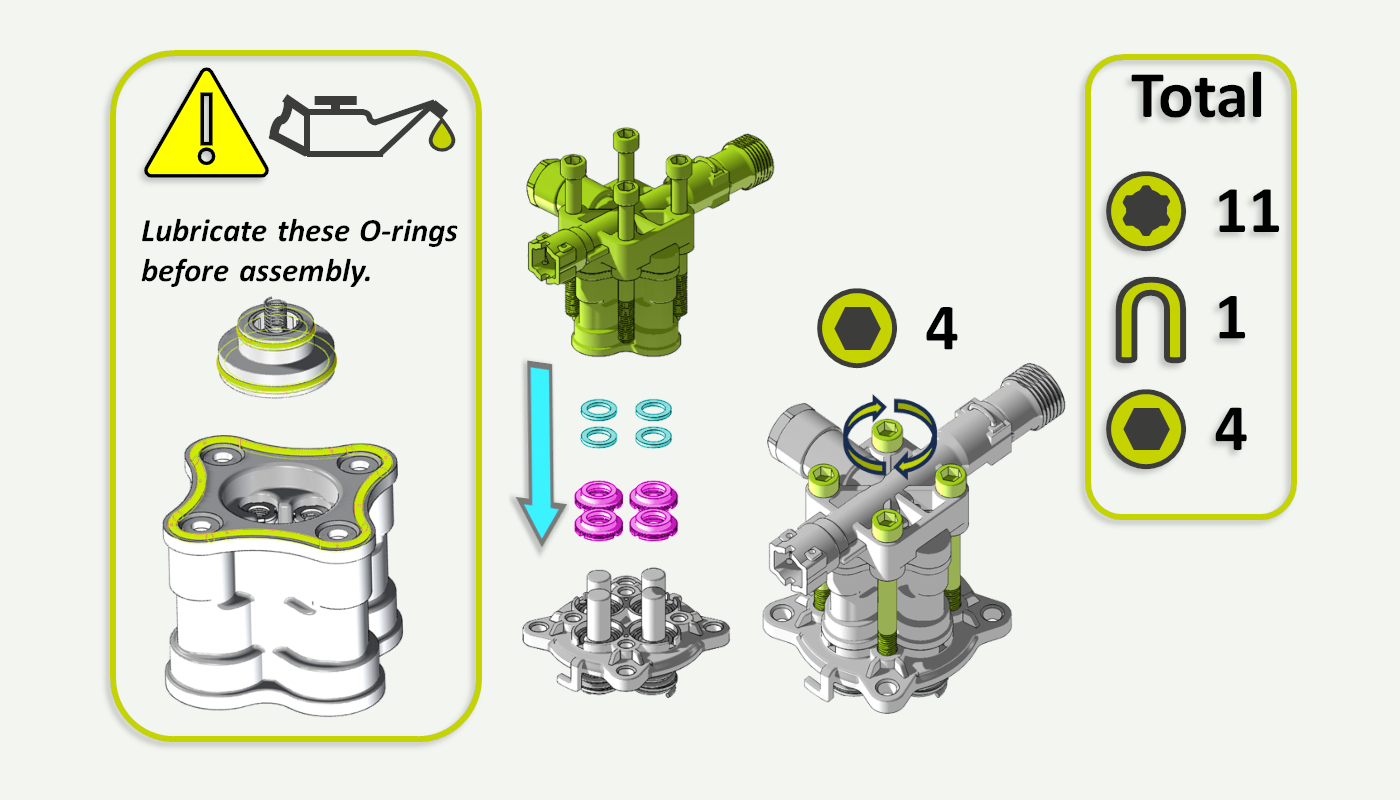
17. Refill oil
Refill the oil chamber with LHM 46 non detergent oil or another non detergent oil with same specifications.
The oil should reach the top of the thrust bearing.
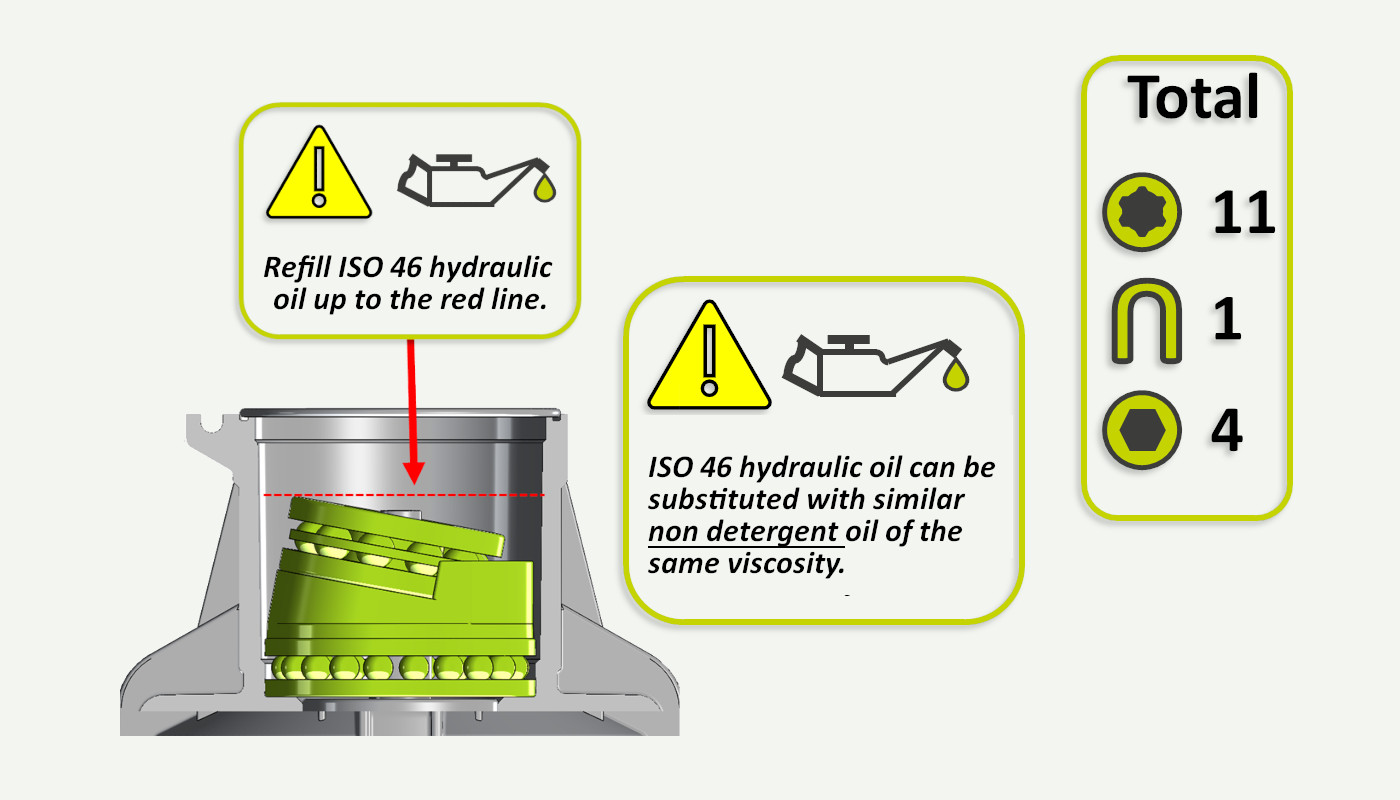
18. Preparing for reassembly
Lubricate the O-ring for the oil chamber.
Fitting the pump assembly back onto the motor requires a bit of force since you have to compress the piston springs. To avoid damage to the screw attachments you should support the cowling with two blocks of wood or something similar before proceeding.
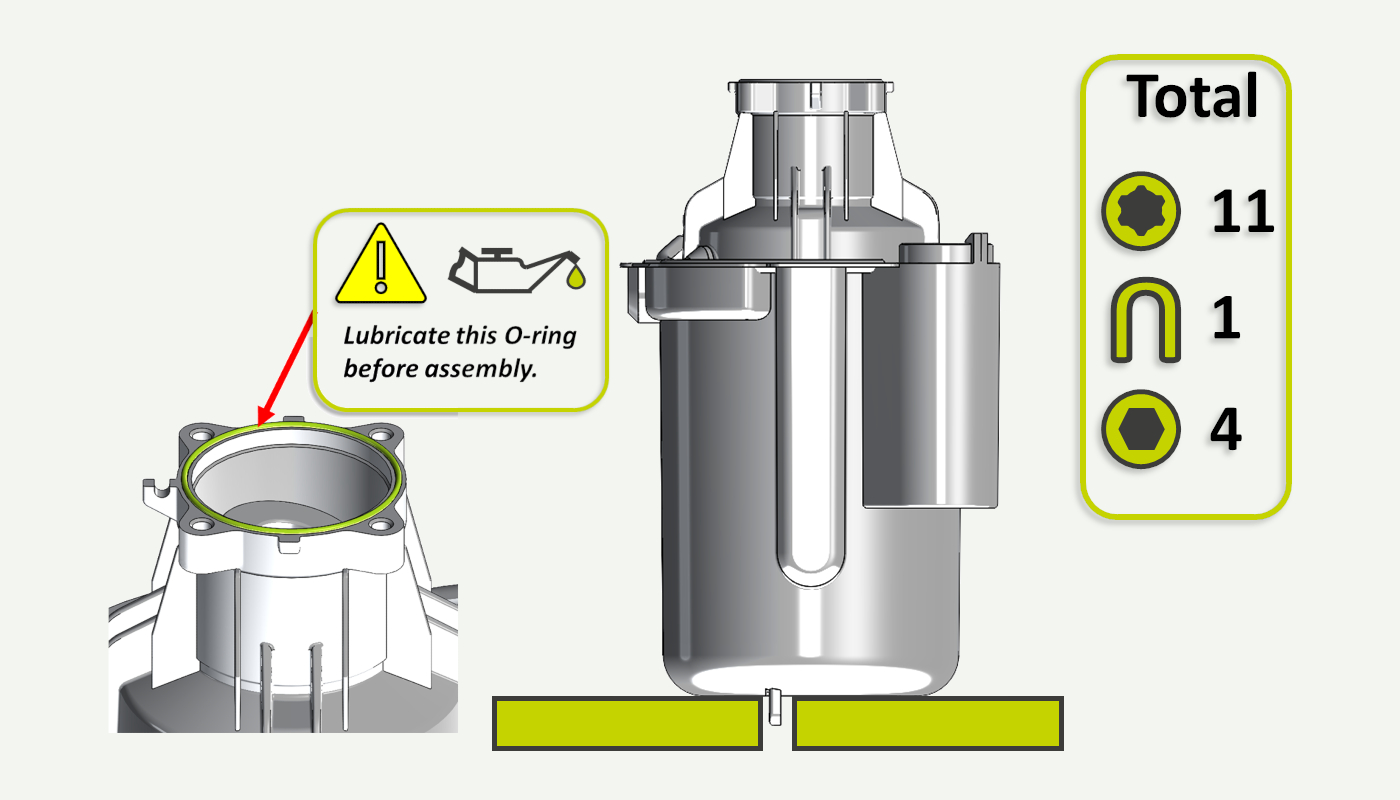
19. Attaching the pump assembly
Before fitting the pump to the motor, make sure that the start/stop valve on the pump head is on the same side as the cutout for the screw (red arrow).
As soon as everything is aligned correctly press the pump assembly down on to the motor. A fair amount of force is needed as you are compressing the piston springs onto the wobble plate.
When the two mating surfaces are in contact, twist the pump assembly 15-20° clockwise so that the two locks engages.
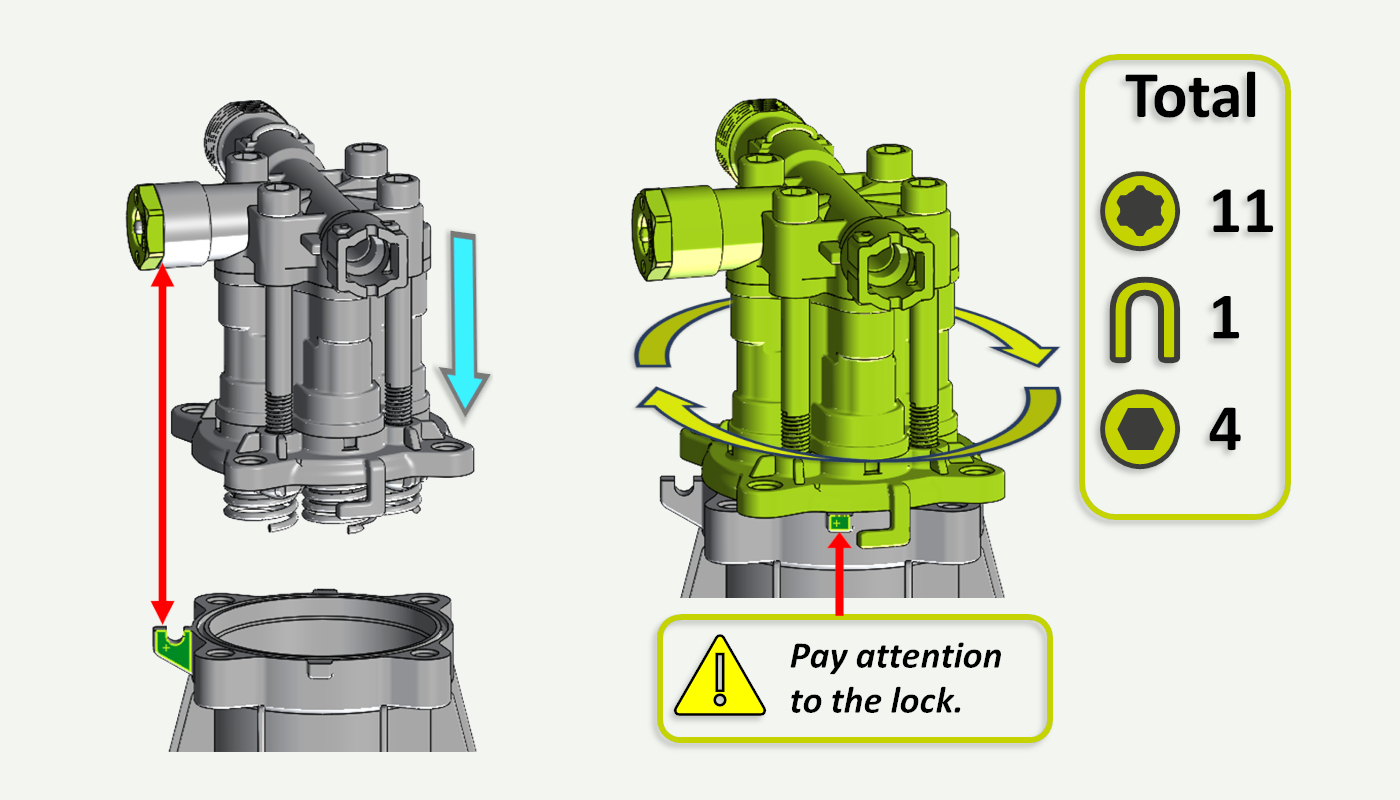
20. Secure the pump
Use the 4 short Allen bolts to fasten the pump to the motor.
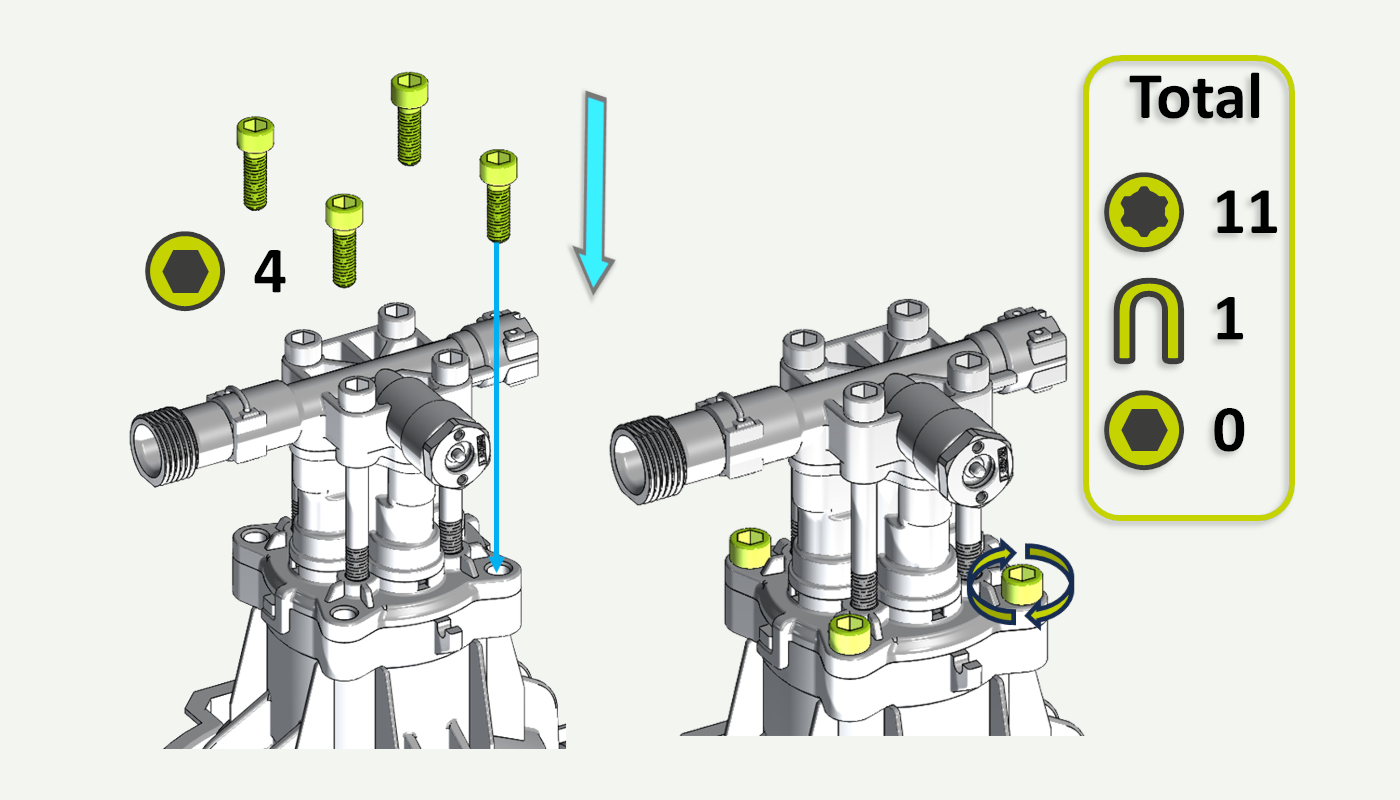
21. Refit the switch box
Attach the switch box to the pump. It requires a fair amount of pressure to get the box firmly seated on the start/stop valve. It should pop into place.
Secure the switch box with a T25 screw.
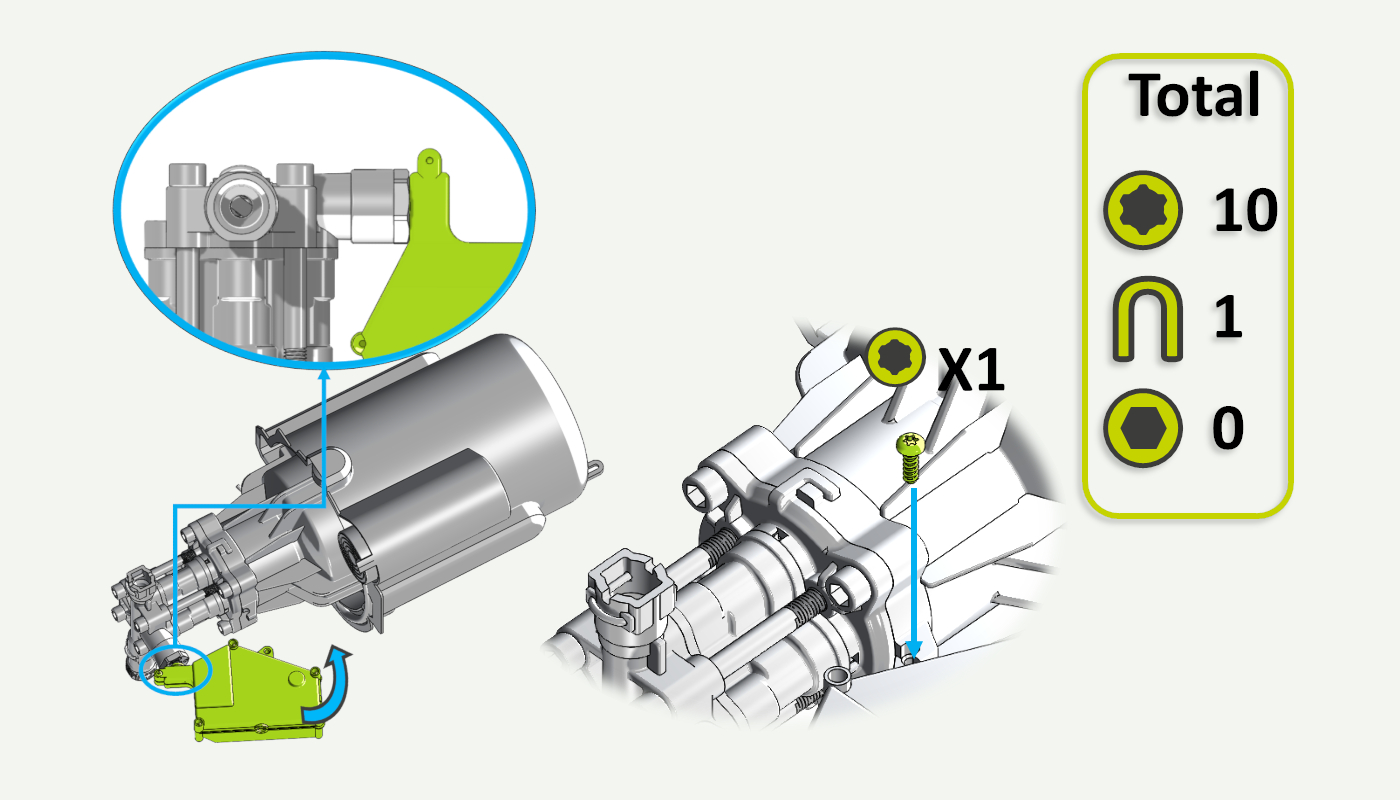
22. Fit on/off button and pump head cover
Reattach the pump head cover and the on/off knob.

23. Put the motor/pump back into the rear cabinet
Carefully lower the motor/pump back into the rear cabinet. The water inlet should be pointing upwards.
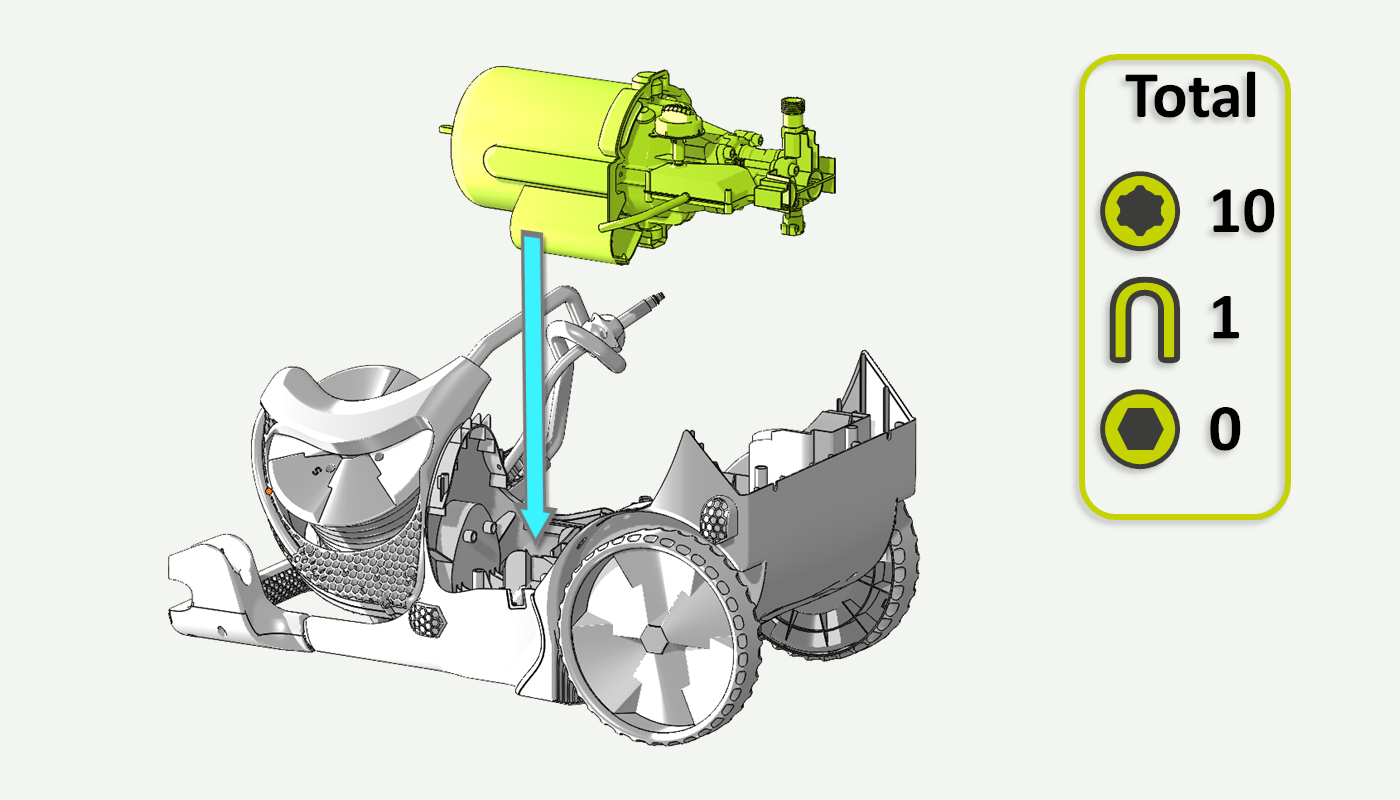
24. Attach the internal pressure hose
With the motor/pump at an angle, reattach the internal high-pressure hose to the pump head.
Secure the hose using a U-pin. Some force may be needed to properly secure the U-pin to the pump head.
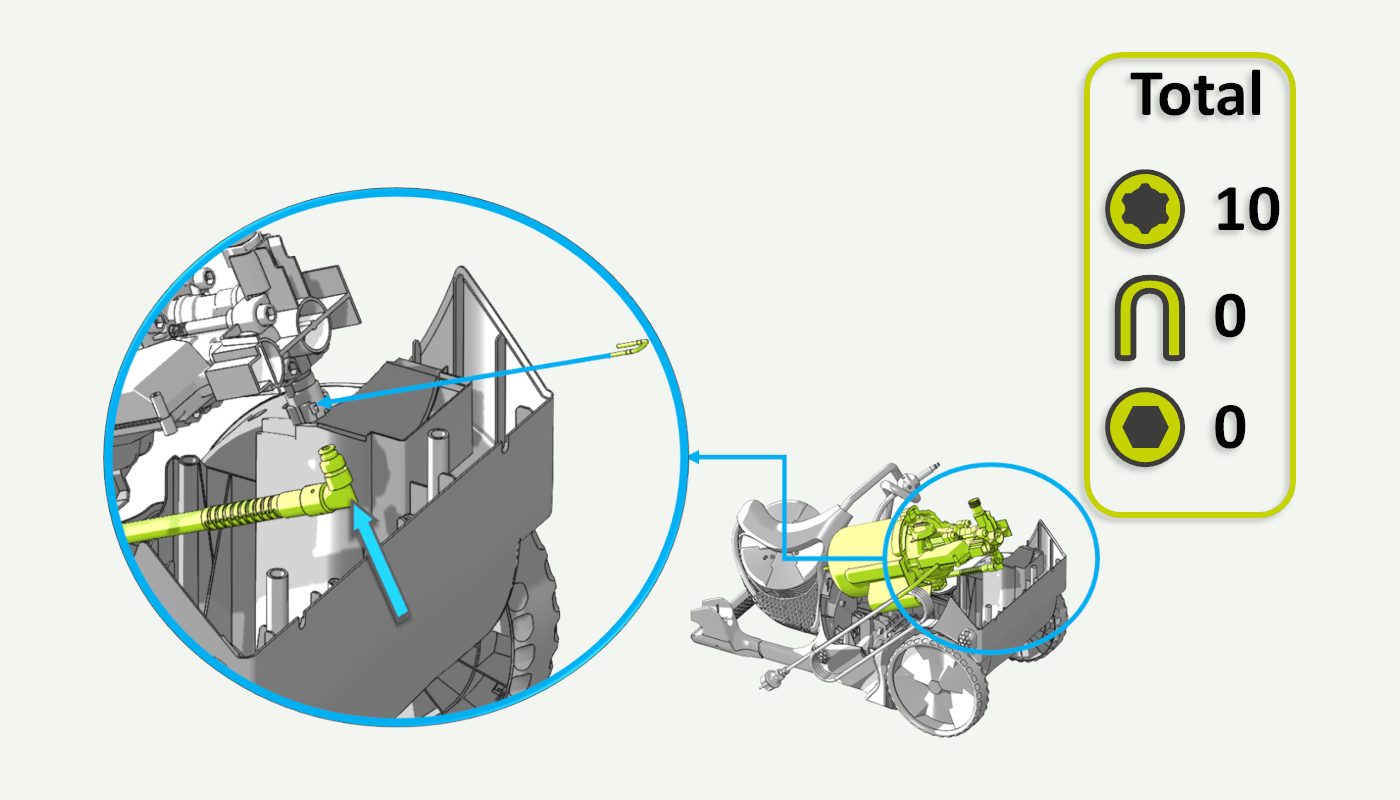
25. Align the internal pressure hose
Make sure that the internal high-pressure hose runs trough these two depressions in the back cabinet (red arrows). If you are unable to fit the motor/pump properly then lift it up and check that the internal hose runs as indicated in this picture
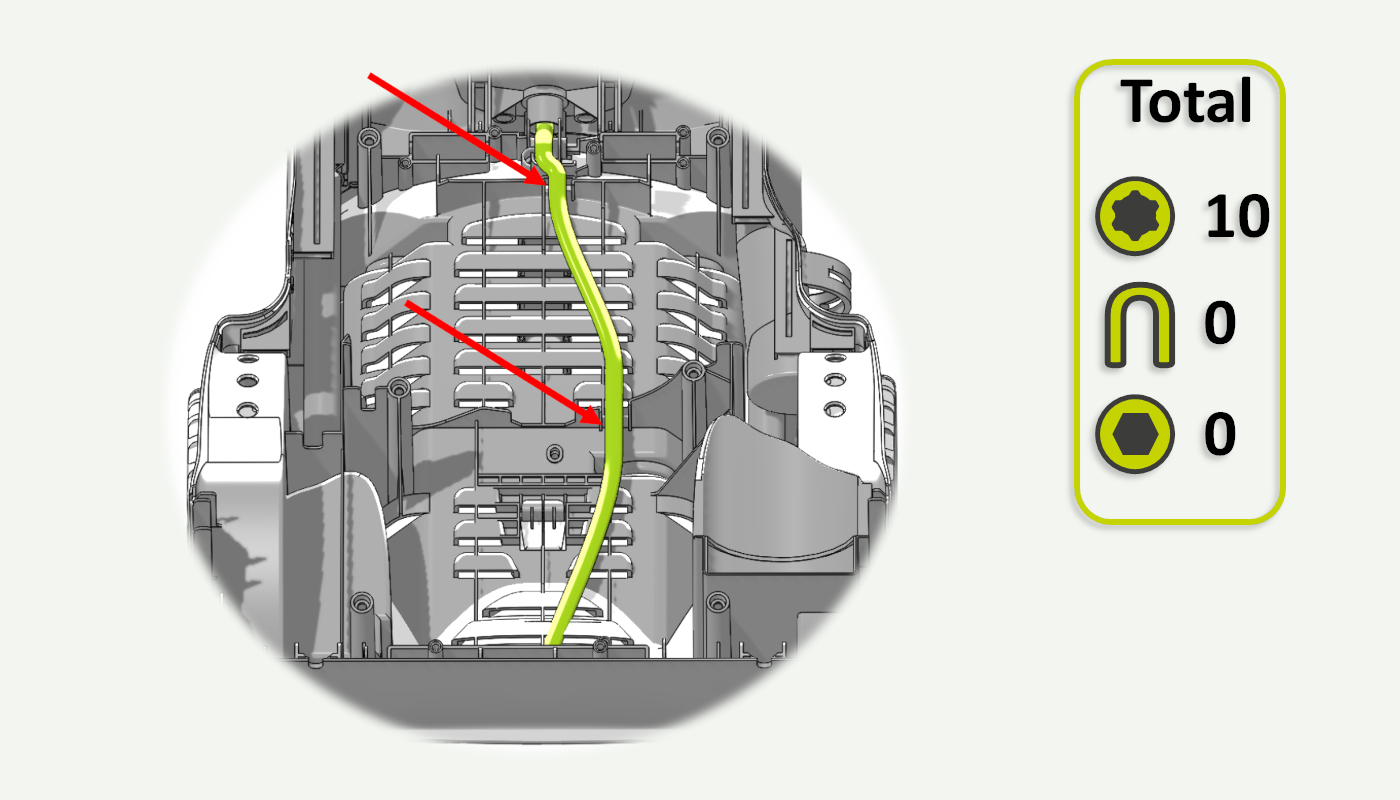
26. Align the motor/pump
If the previous step was successful the motor/pump unit should now fit correctly in the back cabinet.
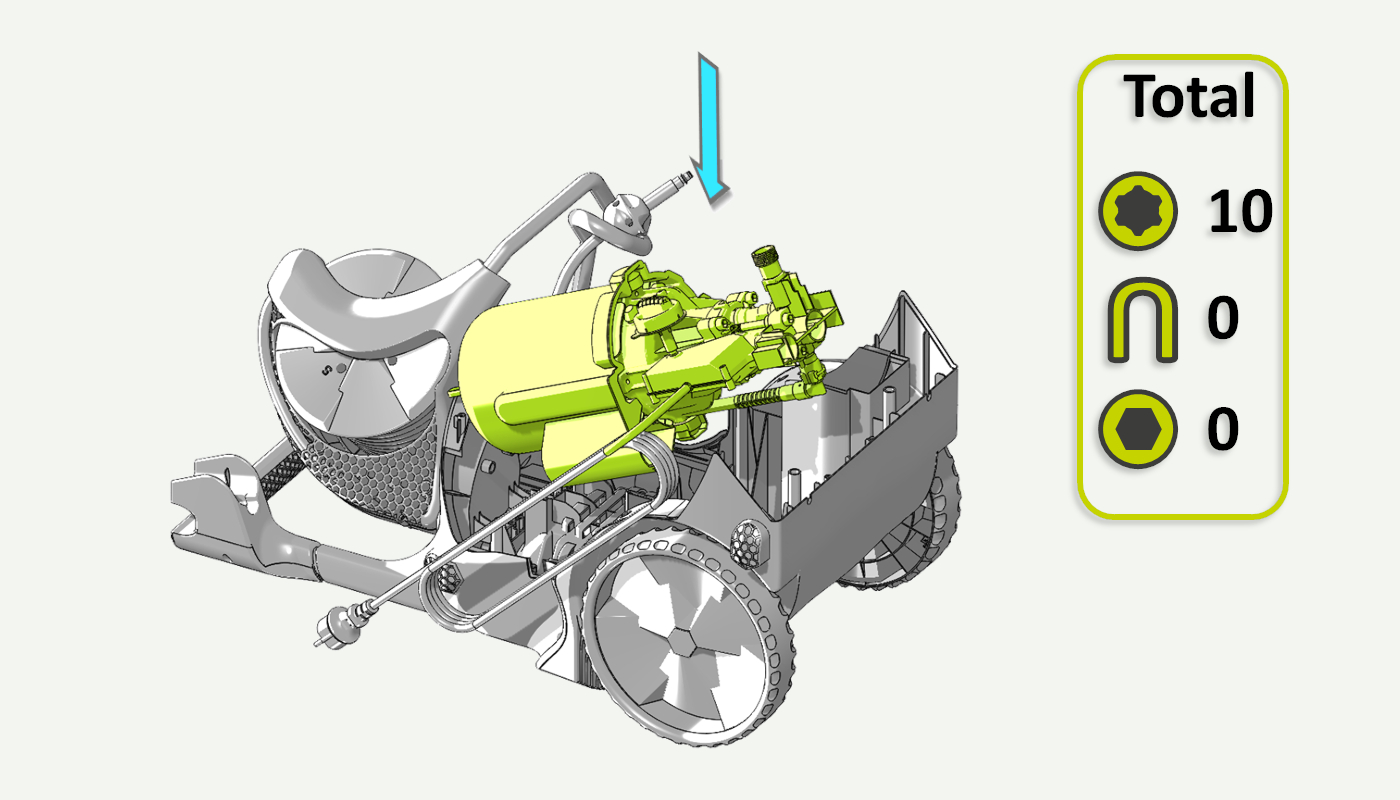
27. Fix the cable strain relief
Reattach the cable strain relief into the slot in back cabinet.
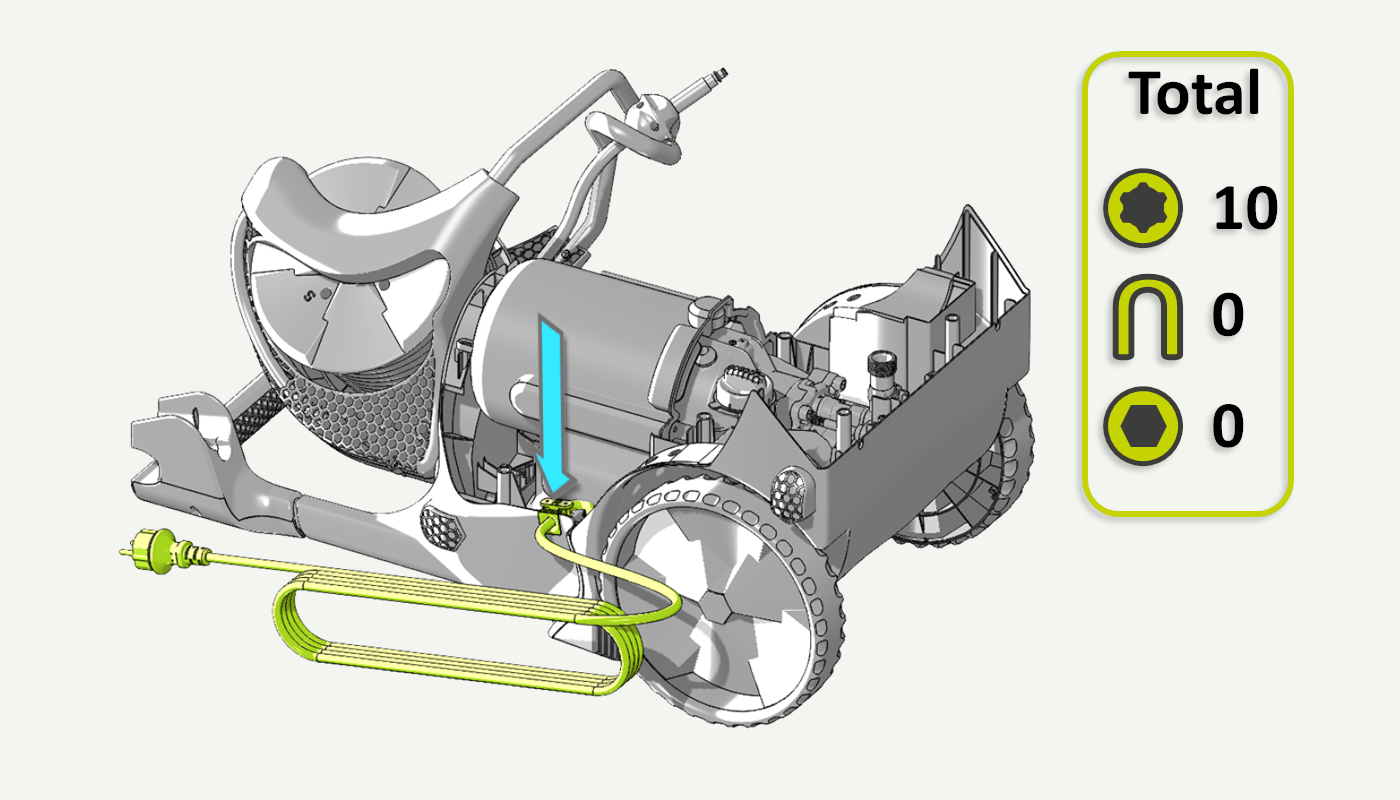
28. Secure the motor/pump
Secure the motor/pump unit using 4 T25 screws. Two screws on top of the motor cowling and two screws on the pump head cover.
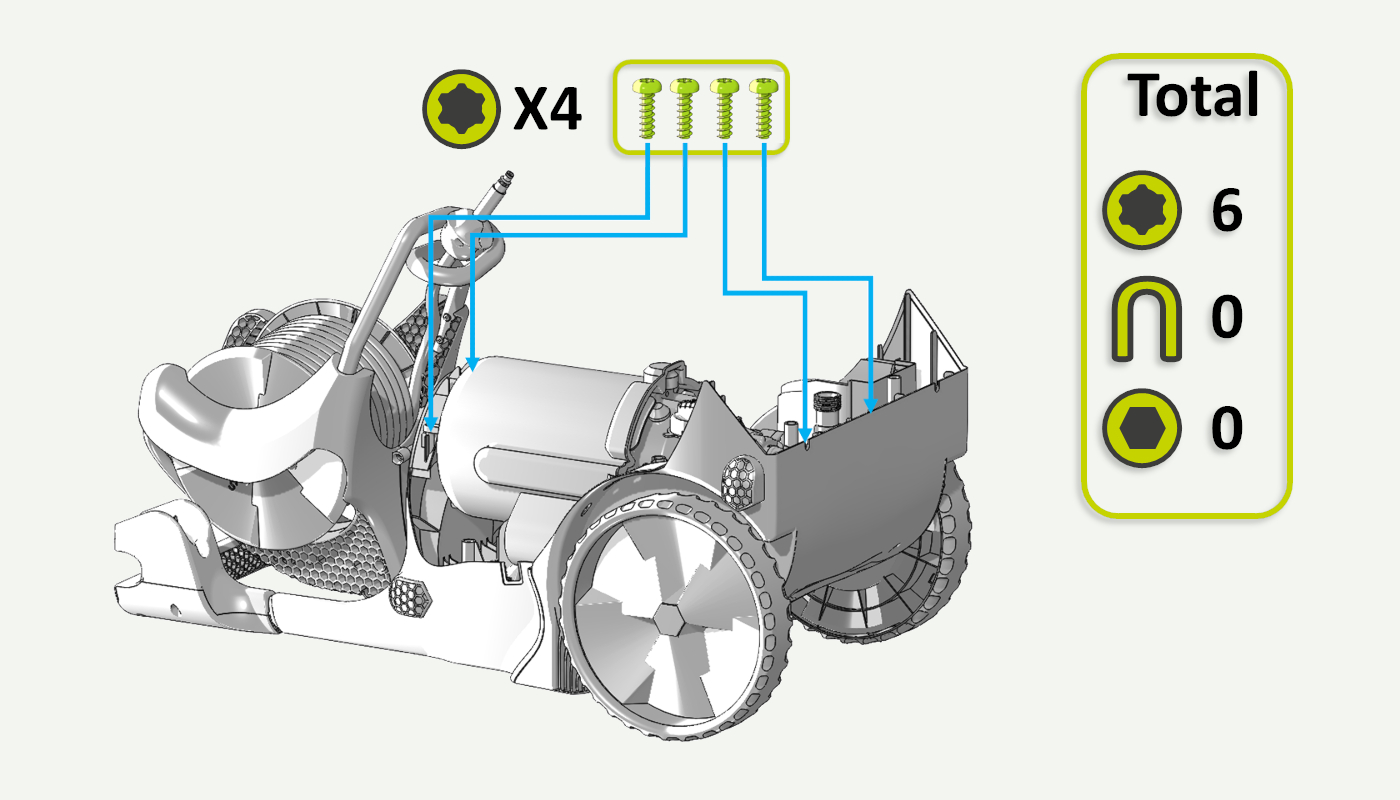
29. Attach the front cover
Put the front cover back onto the pressure washer. This is easiest with the pressure washer lying flat. A bit of work may be needed to get it to align perfectly with the back cabinet, take your time. Push the front brace release button to allow for a correct alignment of the brace. When you are happy with your alignment, raise the pressure washer to the upright position.
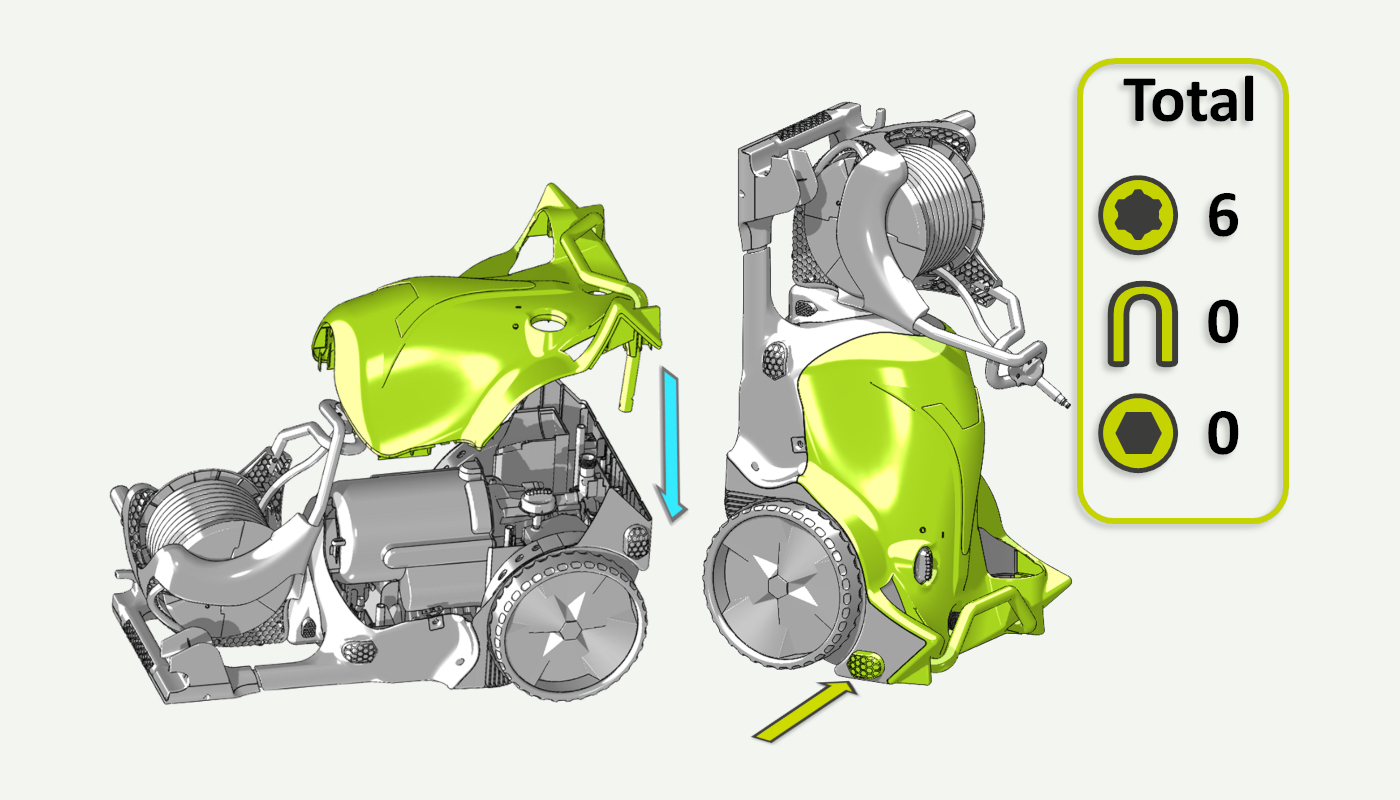
30. Fasten the front cover
Secure the front cover with 6 T25 screws from the backside of the pressure washer.
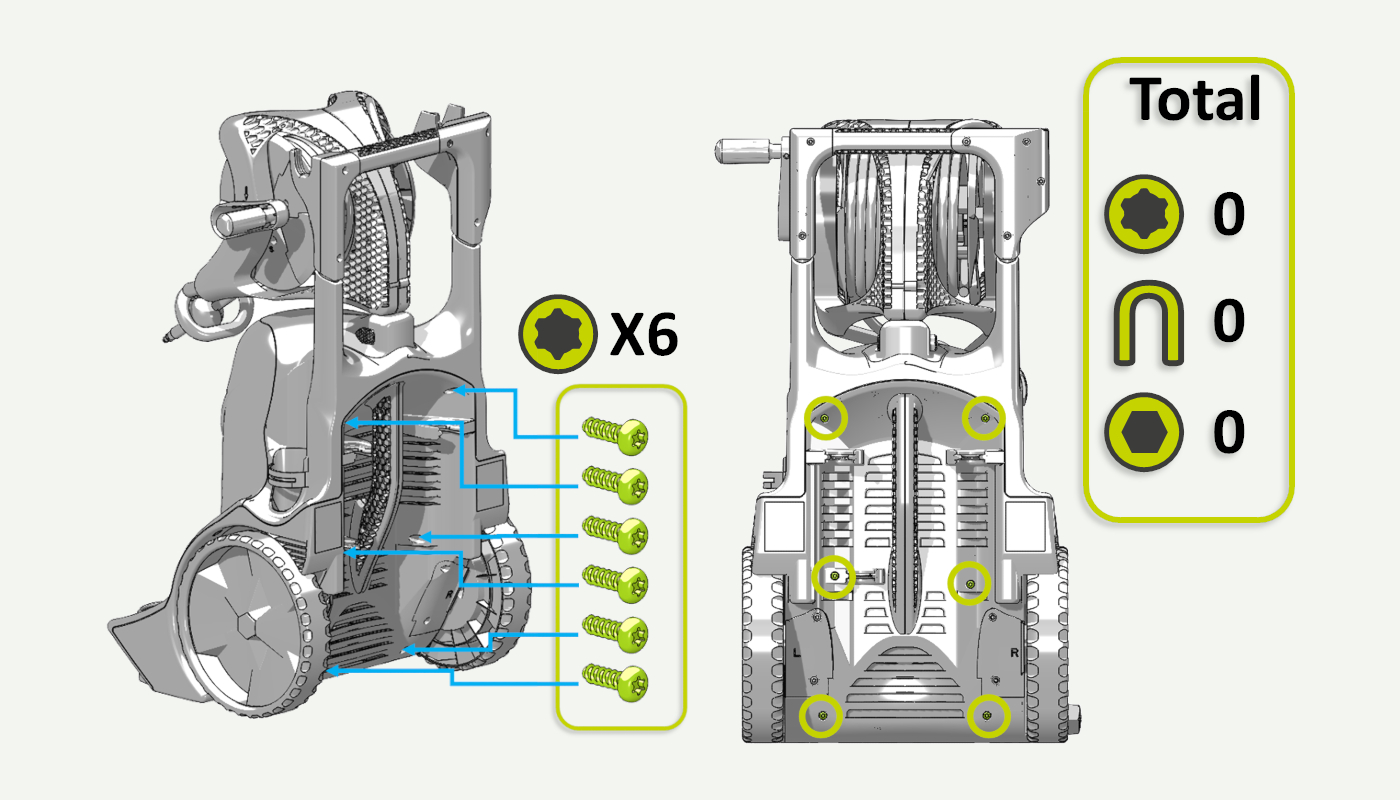
31. Reattach the water filter
Check that the filter cassette is clean and without damage.
Reattach the water filter to the water inlet.
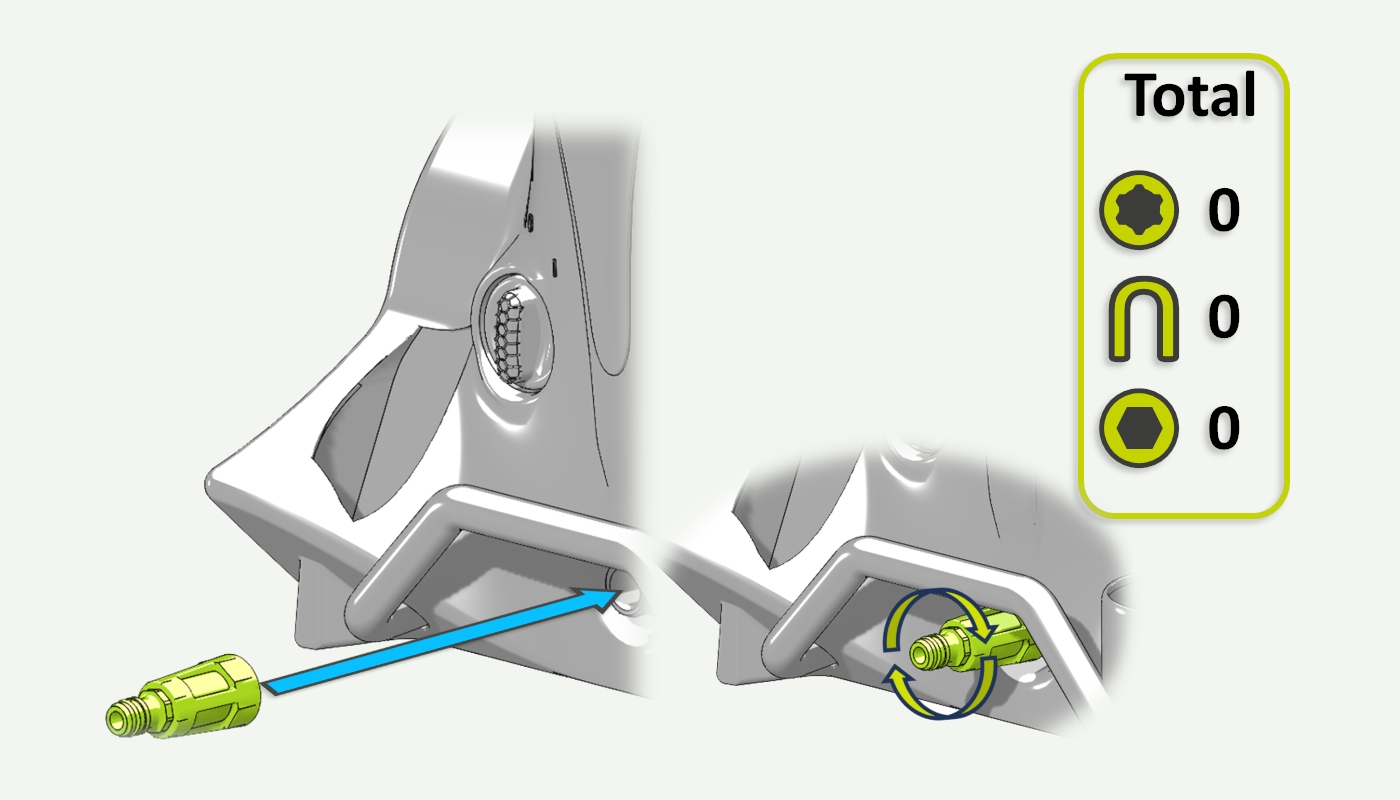
32. First start after service
Congratulations with finishing the service of your AVA product.
It is now time to do the first start after service.
- Start by connecting the pressure gun to the hose.
- Connect water.Make sure no water is leaking from the inside or anywhere else on the pressure washer.
- Pull the trigger and let the water flow until there is no more air coming out.
- Connect the power cord.
- Turn on the pressure washer.
- Pull the trigger and let water run for a minute before connecting a nozzle.
- Connect the nozzle.
- Use the pressure washer and make sure it is operating as normal.
33. Troubleshooting
Water is leaking from the inside
- Disconnect the power and open the pressure washer to locate the leak.
- Take necessary action to remedy any leaks.
Motor runs and won't stop when you release the trigger
- This is most likely due to an improper seating of the switch box on the start/stop valve.
- Open the machine and check that the switch box is correctly seated.
The pressure washer won't turn on
- Check that the power cable is connected.•Check that the circuit breaker has not been tripped.
- Check that the fuse in the power plug is intact (UK models only).
- Open the machine and check that all the internal cabling is connected.
Poor performance/pressure
- Improper assembly or dirt/debris in the pump.
- Check that the pump and especially the main valve for foreign objects/debris.
- Make sure that the spring in the main valve is correctly seated and working as intended.
Motor is making a humming noise and is not able to start
- Check that the capacitor is connected to the motor.
- It should be connected with one white and one black cable.